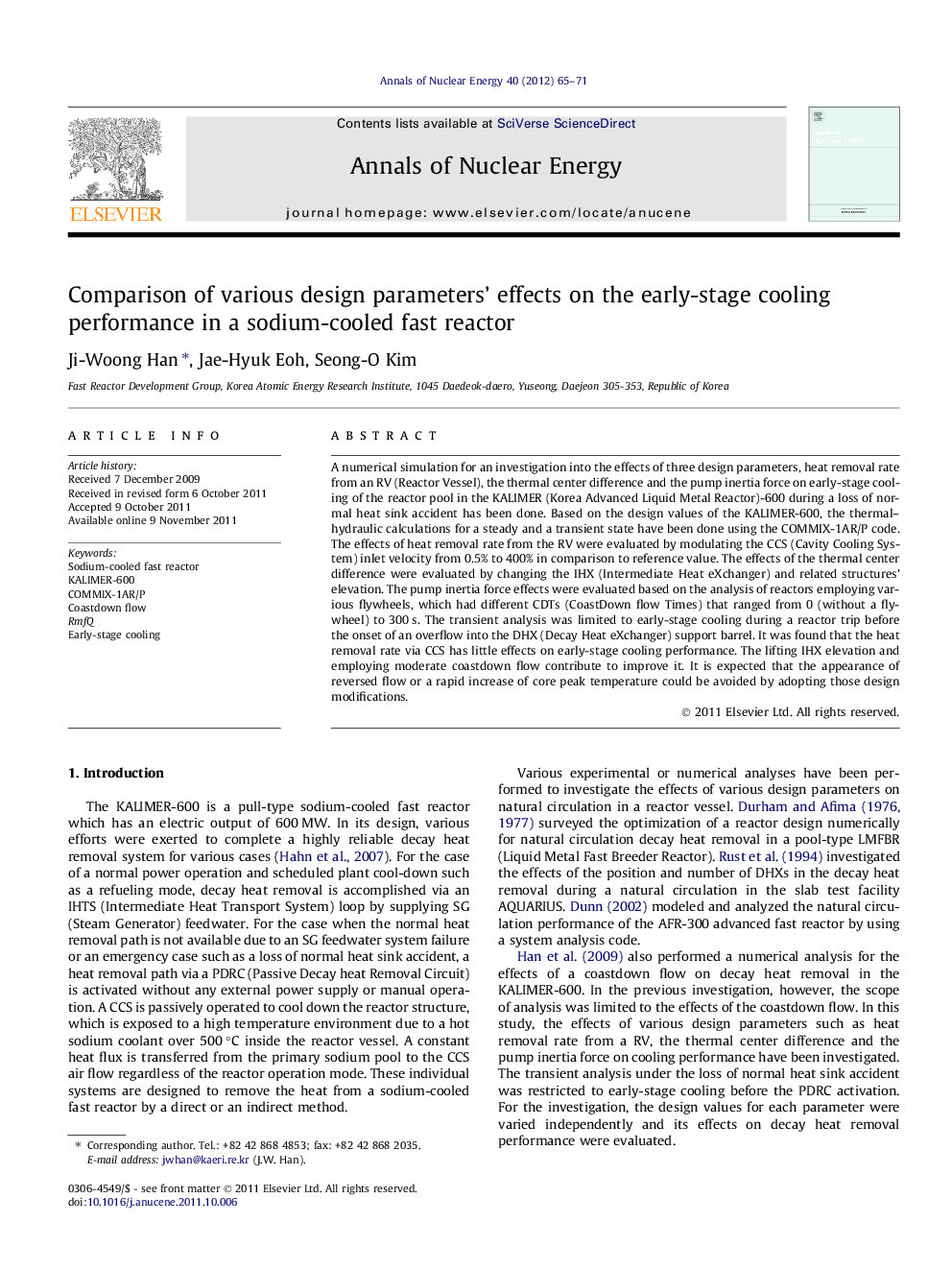| Article ID | Journal | Published Year | Pages | File Type |
|---|---|---|---|---|
| 1729091 | Annals of Nuclear Energy | 2012 | 7 Pages |
A numerical simulation for an investigation into the effects of three design parameters, heat removal rate from an RV (Reactor Vessel), the thermal center difference and the pump inertia force on early-stage cooling of the reactor pool in the KALIMER (Korea Advanced Liquid Metal Reactor)-600 during a loss of normal heat sink accident has been done. Based on the design values of the KALIMER-600, the thermal–hydraulic calculations for a steady and a transient state have been done using the COMMIX-1AR/P code. The effects of heat removal rate from the RV were evaluated by modulating the CCS (Cavity Cooling System) inlet velocity from 0.5% to 400% in comparison to reference value. The effects of the thermal center difference were evaluated by changing the IHX (Intermediate Heat eXchanger) and related structures’ elevation. The pump inertia force effects were evaluated based on the analysis of reactors employing various flywheels, which had different CDTs (CoastDown flow Times) that ranged from 0 (without a flywheel) to 300 s. The transient analysis was limited to early-stage cooling during a reactor trip before the onset of an overflow into the DHX (Decay Heat eXchanger) support barrel. It was found that the heat removal rate via CCS has little effects on early-stage cooling performance. The lifting IHX elevation and employing moderate coastdown flow contribute to improve it. It is expected that the appearance of reversed flow or a rapid increase of core peak temperature could be avoided by adopting those design modifications.
► Improvement of early-stage cooling performance in sodium-cooled fast reactor. ► Lifting the IHX elevation or employing a moderate coastdown flow time is an effective method. ► Enhancing heat transfer rate via reactor vessel has little effects.
